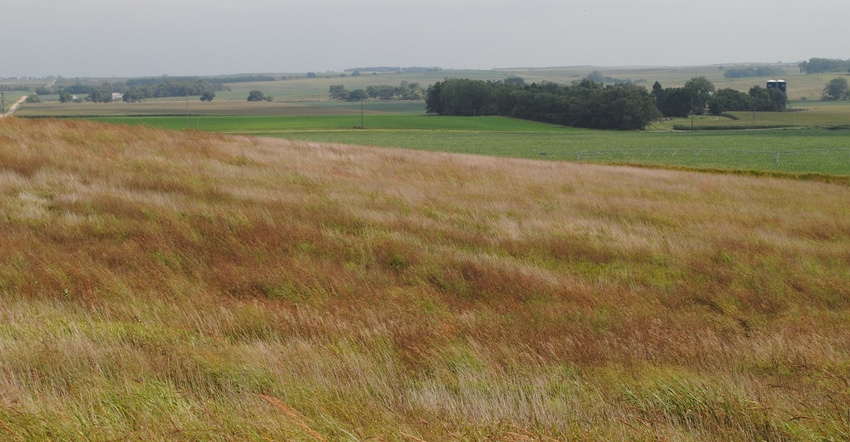August 5, 2022

The USDA Farm Service Agency recently completed new sign-ups for both the general portion and the grasslands portion of the Conservation Reserve Program. Together with new land taken in through the continuous enrollment process for priority practices and lands, the CRP is expected to grow from 2022 into 2023.
Total acreage in the CRP should climb to more than 23 million, rebounding from the recent low of 20.6 million in 2021, but still far below the 30-plus-million-acre enrollment levels of the early 2010s and also below the enrollment cap of 27 million acres for 2023.
With current higher crop price levels, it should not be surprising that CRP enrollment is below the available cap. Over the 35-plus year life of the program, the size and interest in the CRP has seemingly fluctuated inversely with commodity price levels and expectations. There seems to be interest in putting land into the CRP when crop economics look less favorable, and taking land out of the CRP when crop economics look better.
CRP for set-aside
The idea that the CRP acreage would fluctuate inversely with commodity prices is consistent with the original political support for establishing the CRP. When the CRP was created in the 1985 Farm Bill, the political support came largely from farm and commodity groups looking to pull cropland out of production, as inventories were high and prices were low. Conservation groups supported the program as well — based on the accompanying environmental benefits — and helped form the coalition to get the program implemented, but it was the supply control arguments that provided the major impetus at the time.
Over much of the life of the CRP, there has continued to be a substantial focus on the acres enrolled in the program that were set aside from production. Early in the program, enrollment grew to as much as 35 million acres and trade groups argued about how much land was taken out of production. Later, as commodity prices fell in the late 1990s and early 2000s, enrollment swelled to nearly 37 million acres and producers were concerned with how many acres were set to expire and return to production. The political pressure at the time led USDA to offer a reenrollment and extension (REX) opportunity for producers to keep land in the CRP that otherwise would have come out and back into production.
Almost before the REX contracts were even approved, commodity prices started climbing with the growth in biofuels production, and producers were asking USDA how quickly they could get CRP acres out of the program and back into production. Over the past 15 years or so, the CRP has steadily declined, and Congress responded with lower enrollment caps in the 2008 and 2014 Farm Bills to save budget dollars, before slowly expanding the cap in the 2018 Farm Bill. While the CRP still effectively takes millions of acres out of commodity production, it at least has a smaller supply-control effect than it once did.
CRP for conservation
Hand in hand with taking land out of commodity production, the CRP conserved millions of acres with conservation practices that reduced erosion, improved water quality, increased wildlife habitat, enhanced biodiversity and provided other benefits. Over time, the CRP increasingly focused on the environmental benefits, particularly with the advent of the continuous CRP in the early 2000s. Focusing more on partial field enrollments for high-priority practices or land — as opposed to whole field enrollments for the general sign-up — meant that the program provided more targeted enrollments and outcomes.
The continuous enrollment provisions helped take some targeted lands out of production, with environmental benefits and economic incentives that beat the returns from ag production. Additional features such as enhancement programs and longer-term enrollment opportunities have targeted the investments and benefits even further. As such, more of the acres in the CRP today are more likely to provide lasting conservation benefits and remain out of commodity production than under the original sign-up provisions.
CRP for working lands
While the CRP today continues to provide conservation benefits, it is also increasingly focused on working lands conservation, or conservation on land that stays in production. The early CRP was definitely focused on taking land out of production, but several features of the current CRP provide benefits for working land. The grasslands portion of the CRP helps producers protect grasslands and other sensitive lands while largely maintaining the land for grazing activity. In the general CRP, managed haying and grazing provisions and also emergency provisions under disasters such as drought mean that other CRP acres can be effectively used in agricultural production as well, albeit under controlled practices that maintain environmental benefits and protection.
Enrollment mix
With the three broad categories for CRP enrollment, it is interesting to see that the enrollment mix by October, when new contracts start, is expected to be split fairly evenly. The general enrollment will be around 8.9 million acres, the continuous enrollment should have at least 7.4 million acres (with more acres potentially added every month), and the grasslands program will have just over 7 million acres enrolled.
With almost a third of the program focused on working grasslands, almost a third focused on priority practices and benefits, and the remainder including some grasslands for which managed or emergency haying and grazing provisions often apply, it is clear the CRP is more focused today on specific conservation priorities and working lands than it is on the original goal of setting aside land from production. It still adds up to millions of acres that are not currently in crop production, but those are not idle acres simply waiting for a chance to return to crop production.
Lubben is the Extension policy specialist at the University of Nebraska-Lincoln.
About the Author(s)
You May Also Like






